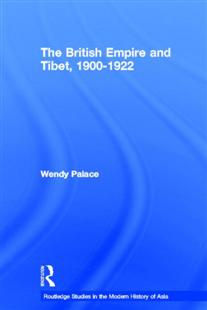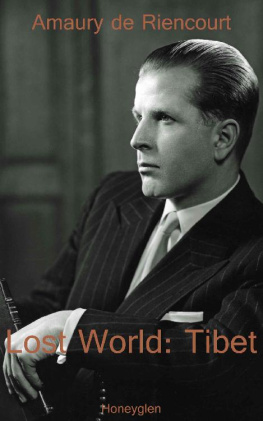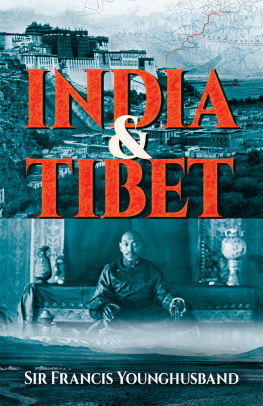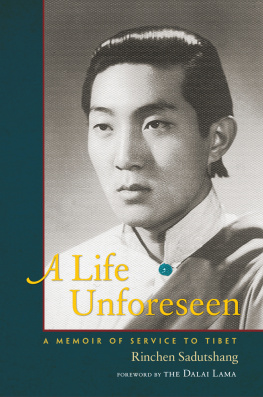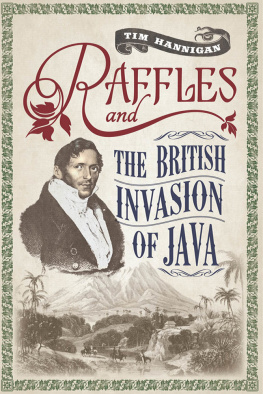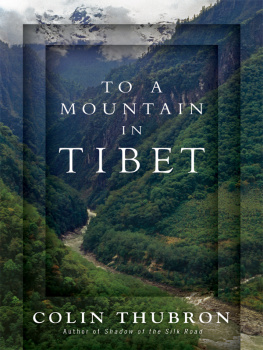Contents
List of figures Acknowledgements |
| The Younghusband invasion, 1900-1904 |
| Masterly inactivity: Britains non-involvement policy, 1905-1908 |
| Beyond the frontier: the British administration in Tibet, 1904-1908 |
| Delicate work: the Dalai Lama, the China Service and East Tibet, 1904-1909 |
| Revolution, invasion and independence: Britain, Tibet and China, 1910-1913 |
| The Simla Conference and the bipartite settlement, 1912-1914 |
| The China Service and East Tibet, 1914-1918 |
| Lhasa unveiled: Britain and Tibet in the post-war world, 1918-1922 |
Conclusion |
Notes Select bibliography Index |
3 Beyond the frontier
The British Administration in Tibet, 1904-1908
[N]ot withstanding all you say about the Man on the Spot, I humbly reply that this is just what the Government of India is not.
Lord Morley, January 1908
While others tried to rectify by diplomatic means what they perceived to be the damage caused by the Younghusband invasion and the Lhasa Convention that followed, the men on the spot, who worked as trade agents inside Tibet, were left to cope with the daily business of administration in the face of mounting political and psychological pressure, and in the growing awareness that the British Foreign Office were prepared to give little in the way of positive support.
Between the signing of the Lhasa Convention and the evacuation of Chumbi in February 1908 a kind of British administration struggled to survive at the trade marts in Yatung and Gyantse. The men selected to become trade agents at these marts had been handpicked by Curzon and had been key members of the Younghusband expedition. A post at Chumbi, mainly set up to help with the administration at Yatung, boosted the British presence in the Chumbi valley, while at the older established mart at Gartok it was considered wiser to employ an agent who was related to the local tribal leader and who might therefore be better placed to understand the special conditions in this less-contentious area. Observing them all from a safe distance was the overworked British political officer in Sikkim who, as well as monitoring Tibet, also had responsibility for Sikkim and Bhutan.1
The men appointed to the trade marts at Yatung and Gyantse and the post at Chumbi came from the prestigious Indian Political Department and were widely referred to as the Politicals. These men enjoyed a freedom and status denied to others because they came under the direct jurisdiction of the viceroy himself. A posting with the Politicals offered a fascinating alternative to a boringly predictable career in other departments of the Indian Civil Service (ICS) for the adventurous youth willing to take a career gamble. The lucky few appointed served as political agents in the various Indian states; as administrative officers on the north-east and north-west frontiers of India; and as consular officials on the Indian borders and in Persia. Although the north-west Frontier had long been considered the more glamorous posting it was also far more dangerous, and after Younghusband reached Lhasa in 1904 the attractions of the remoter and more exotic north-east frontier, that included Tibet, fired the imagination of these men. Employment on this frontier offered adventure without too much danger, as well as the excitement of the unknown since much of it was still unexplored; by 1904 there was great competition for postings there.
There were four possible routes into the Politicals. The first was via the army. Two-thirds of all recruits entered the Service in this way and young army officers like Frederick Bailey, a member of the Younghusband expedition and later trade agent at Gyantse, were drawn to the Indian frontier as an antidote to an otherwise claustrophobic and anonymous life in army barracks.2
A second, more obvious route was by way of the ICS, and the majority of men not recruited from the army came in this way. The Politicals offered men like Charles Bell an opportunity to escape the Indian plains (where the harsh climate had already ruined his health before he reached the age of thirty), and a safe yet boring office posting at Simla, which threatened to destroy his sanity. Like Bailey, Bell had also been a member of the Younghusband expedition and, after serving a term as Claude Whites deputy at Sikkim, he eventually succeeded him as political officer in 1908, remaining there until his retirement in 1920.3
A third route into the Service came via the Indian Medical Corps. Here men of high calibre competed for posts which offered the possibility of substantial career enhancement, either by becoming surgeons to wealthy maharajah or, on the frontier itself, working for the Indian government. If chosen for the Politicals these men enjoyed an independence and a particular prestige amongst Himalayan tribal peoples, including the Tibetans, who were usually grateful for the free medical care they offered in return for the chance to study and record a whole range of previously undocumented diseases. During the Younghusband expedition Dr Augustine Waddell and his medical team had treated the wounds of Tibetan prisoners, some of whom had shown their gratitude by staying with the British party throughout the remaining journey to Lhasa. This experience then made it much easier for those British doctors later attached to the trade marts inside Tibet to treat the sick without hindrance.4 Even when the British withdrew from Chumbi in February 1908, for example, they were allowed to leave a dispensary behind, ostensibly for the benefit of the local population but also because its presence there enabled the Indian government to continue to monitor events in the Chumbi valley long after their troops had left.5
A fourth and final route into the Politicals was by way of the Indian
Public Works and Engineering Department. Engineers and surveyors from this department could sometimes transfer into the Service in order to build the transport and cable systems badly needed on the frontier by the British. Claude White had come to the Service this way, by his own admission sacrificing a promising engineering career in order to take on the difficult task of political officer in Sikkim between 1889 and 1908, and had also served as commissioner to the Younghusband expedition in 1903.6
Last but by no means least, members of the separate Native Indian Civil Service and army worked alongside British personnel, sharing the workload and the dangers of the remotest frontier posts as clerks and assistants, although, like the courageous Indian pundits before them, their names were rarely recorded in official correspondence.7
In June 1906, soon after the adhesion treaty had been signed, the Chinese had sent Chang Yin-tang to India in his capacity as Special Commissioner for Tibet to prepare for what they described as a trade mission to the country. In reality Chang was being sent to Tibet to implement a new Chinese forward policy and, at the same time, to issue a direct challenge to the prestige of the Indian government and their men on the spot. Chang had previously taken over from Tang Shao-yi as Chinese delegate to the adhesion talks in late 1905 and was already known to the British as a tough negotiator. News of his appointment in June 1906 created alarm in India and the flood of telegrams which then passed between Minto and Morley reflected a similar concern at the India Office.8
The original telegram to India announcing Changs appointment had also contained quite detailed information about what he was expected to do once he entered Tibet. He was going there apparently to arrange the opening of Trade Marts in a move calculated to antagonise the Indian government by seeking to re-establish Chinas right to resume control over those aspects of the Tibetan trade which, in their view, had been threatened by both the Lhasa Convention and the adhesion treaty. There were further raised eyebrows in India when it was discovered that Chang intended to ask Minto to supply him with transport and facilities for his journey to Tibet, together with a request for a face-to-face meeting with Indian foreign secretary, Sir Louis Dane.9
Next page
